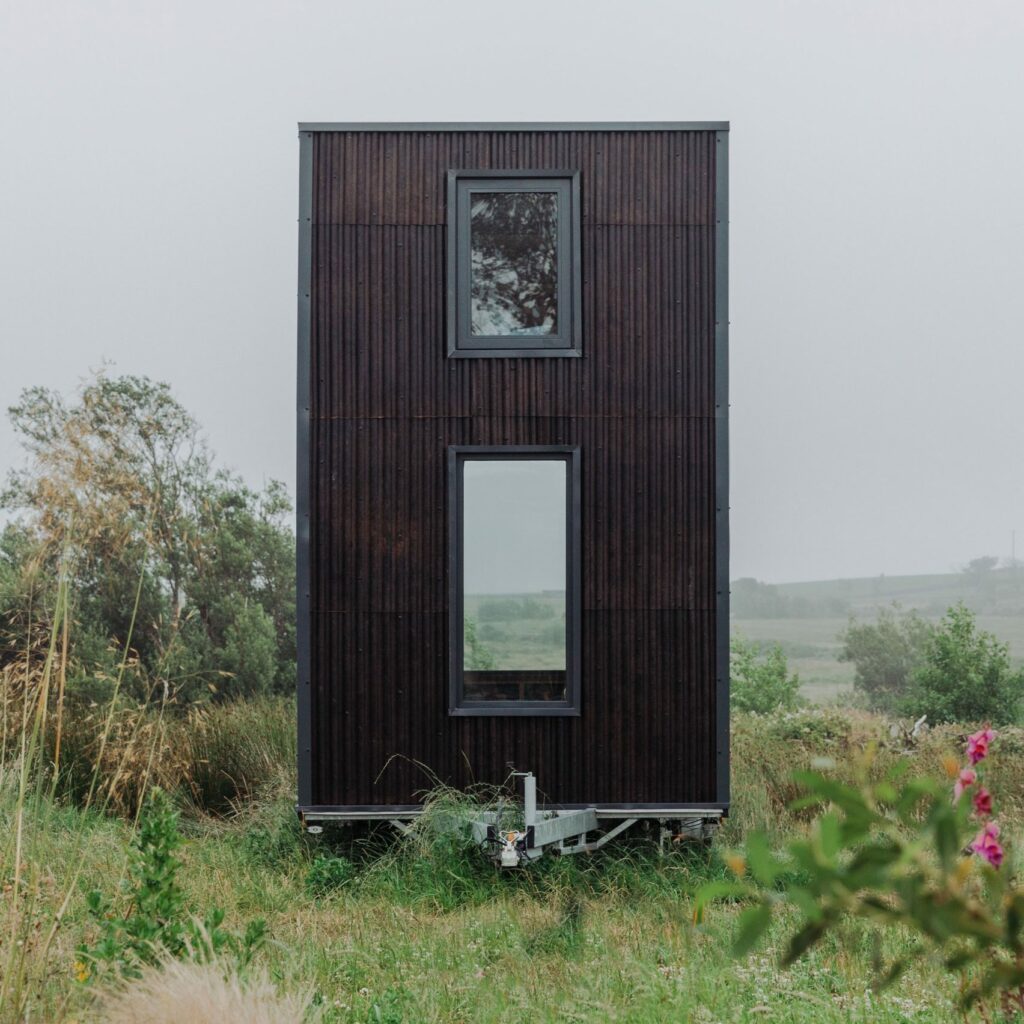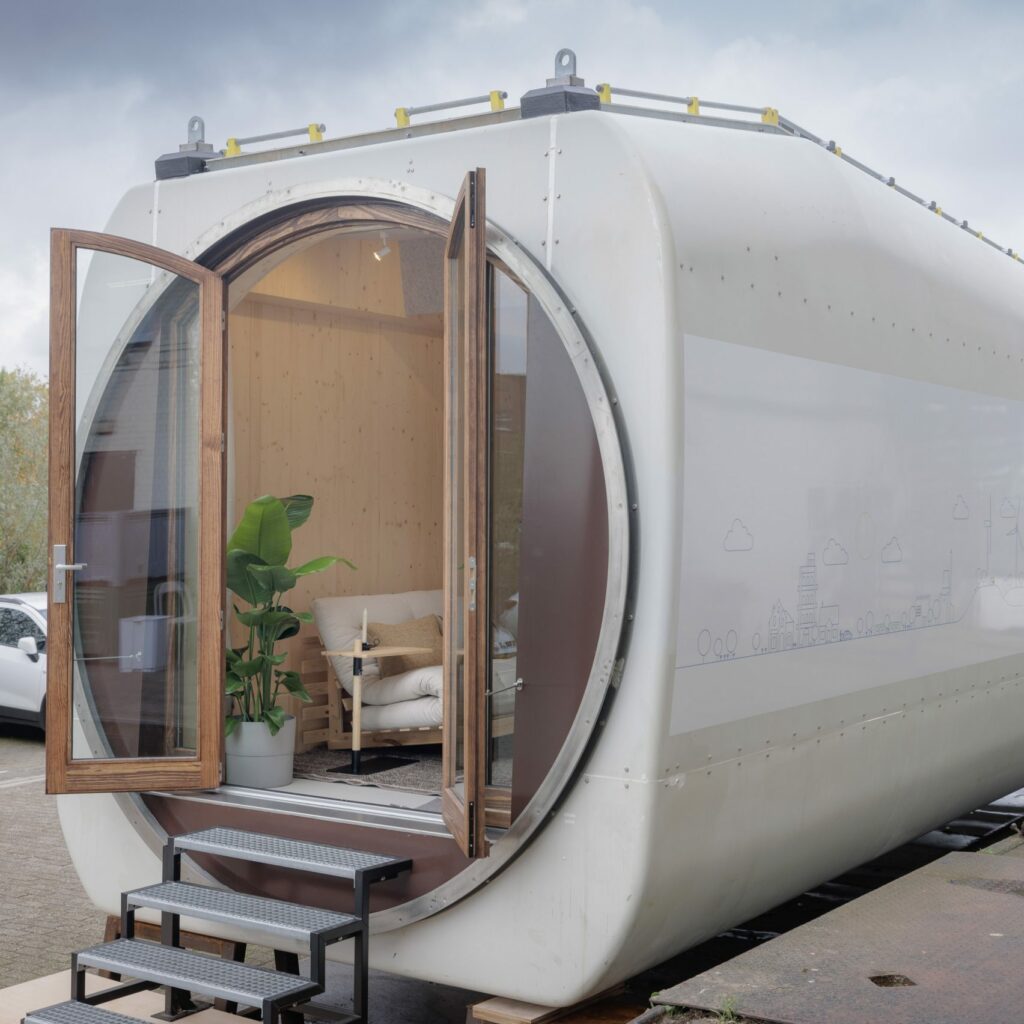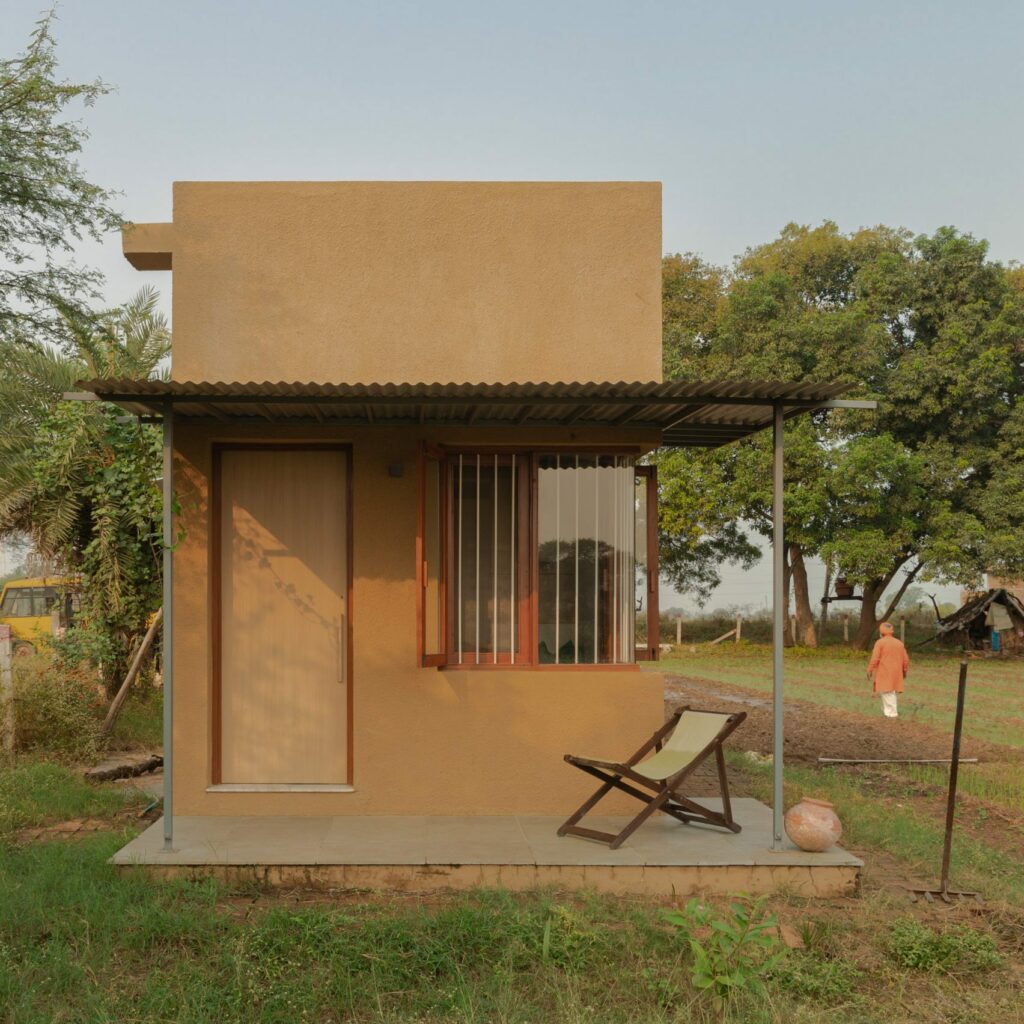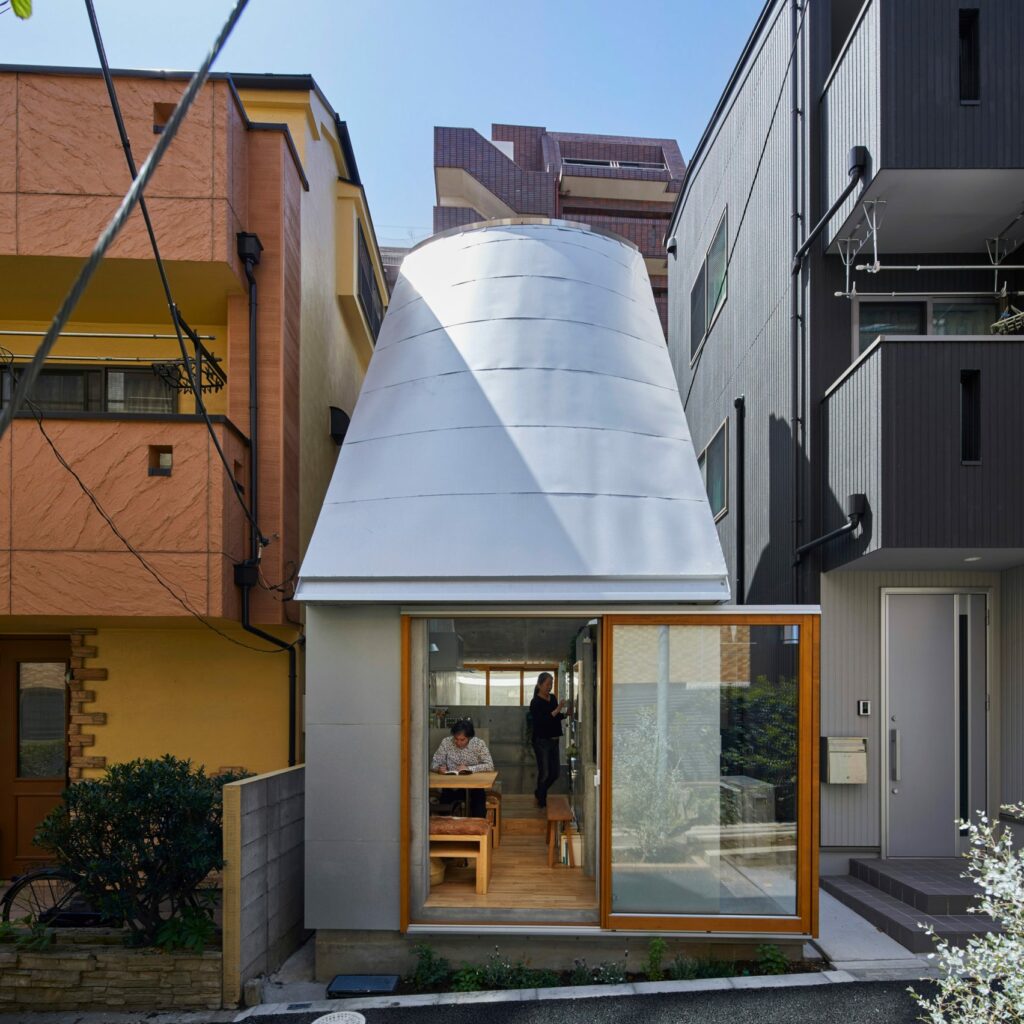 Designed as low-carbon dwellings for people who are struggling to afford their own homes, the Tigín Tiny Homes in Ireland measure just 215 sf. They were created by Irish social enterprise Common Knowledge together with hemp producer Margent Farm and built from natural materials, including corrugated hemp cladding panels, cork insulation and natural rubber linoleum floor tiles.
Designed as low-carbon dwellings for people who are struggling to afford their own homes, the Tigín Tiny Homes in Ireland measure just 215 sf. They were created by Irish social enterprise Common Knowledge together with hemp producer Margent Farm and built from natural materials, including corrugated hemp cladding panels, cork insulation and natural rubber linoleum floor tiles.
 Located on a narrow forest site in northern Germany, Digital House is an aluminum-clad home assembled completely without nails or screws. It relies on a plug-in assembly system consisting of plywood panels and cross-shaped joints that allow the elements of the structure to slot into each other. Architects Julian Krüger and Benjamin Kemper also designed the house, made from recycled aluminum and timber, to be easily disassembled.
Located on a narrow forest site in northern Germany, Digital House is an aluminum-clad home assembled completely without nails or screws. It relies on a plug-in assembly system consisting of plywood panels and cross-shaped joints that allow the elements of the structure to slot into each other. Architects Julian Krüger and Benjamin Kemper also designed the house, made from recycled aluminum and timber, to be easily disassembled.
 Architect Enrico Sassi turned a small stone building, originally used to store wood, into a micro home in Switzerland. The house, measuring just 150 sf, was given a new roof, an extra window and space-efficient furnishings. It is now being used as a holiday home.
Architect Enrico Sassi turned a small stone building, originally used to store wood, into a micro home in Switzerland. The house, measuring just 150 sf, was given a new roof, an extra window and space-efficient furnishings. It is now being used as a holiday home.
 A section of a decommissioned wind turbine was transformed into a tiny home by Dutch design studio Blade-Made. It features a simple, wood-lined interior and renewable solar-powered electricity. Designed to demonstrate new uses for wind turbines that have reached the end of their working life, the small house uses the wind turbine’s nacelle to create the Nestle home. It covers just 439 sf.
A section of a decommissioned wind turbine was transformed into a tiny home by Dutch design studio Blade-Made. It features a simple, wood-lined interior and renewable solar-powered electricity. Designed to demonstrate new uses for wind turbines that have reached the end of their working life, the small house uses the wind turbine’s nacelle to create the Nestle home. It covers just 439 sf.
 Tiny House was created in response to India’s shortage of affordable housing and has a compact footprint of 210 sf. The architects wanted to show how the “aspirational image of an Indian house” could be achieved quickly and within a minimal budget. The prototype brick home is covered in earth colored plaster.
Tiny House was created in response to India’s shortage of affordable housing and has a compact footprint of 210 sf. The architects wanted to show how the “aspirational image of an Indian house” could be achieved quickly and within a minimal budget. The prototype brick home is covered in earth colored plaster.
 One of the tiniest of the tiny houses on this list, Love2 House in Tokyo measures just 205 sf and features a design influenced by the architecture of ancient Roman villas. The Japanese house features spaces specially designed for eating, reading, daily baths and listening to vinyl records. As the site doesn’t receive any direct sunlight during the three winter months, it was designed with two curved roofs that are open to the sky and let the light in.
One of the tiniest of the tiny houses on this list, Love2 House in Tokyo measures just 205 sf and features a design influenced by the architecture of ancient Roman villas. The Japanese house features spaces specially designed for eating, reading, daily baths and listening to vinyl records. As the site doesn’t receive any direct sunlight during the three winter months, it was designed with two curved roofs that are open to the sky and let the light in.
 This glass micro home on stilts is nestled in a grove of mature trees on a remote farm in Austria. Built for clients who wanted a compact space that was open to the surrounding landscape, Zen House has a material palette informed by the local vernacular. Measuring just 355 sf the vaulted single-room structure was raised on concrete columns four metres above the ground and is flanked by a terrace.
This glass micro home on stilts is nestled in a grove of mature trees on a remote farm in Austria. Built for clients who wanted a compact space that was open to the surrounding landscape, Zen House has a material palette informed by the local vernacular. Measuring just 355 sf the vaulted single-room structure was raised on concrete columns four metres above the ground and is flanked by a terrace.
 A former silo, which is seven metres high, comprises two floors – a living space and a mezzanine sleeping area. Silo Living has added windows and a skylight that functions as a lookout point. The archtect hopes her design could encourage other silo owners to get creative, as disused silos are common in rural areas in the Netherlands.
A former silo, which is seven metres high, comprises two floors – a living space and a mezzanine sleeping area. Silo Living has added windows and a skylight that functions as a lookout point. The archtect hopes her design could encourage other silo owners to get creative, as disused silos are common in rural areas in the Netherlands.
You can read the original article at www.dezeen.com

